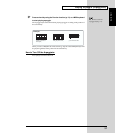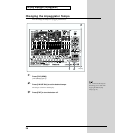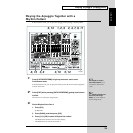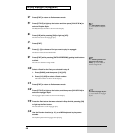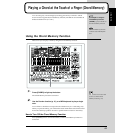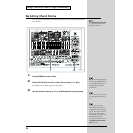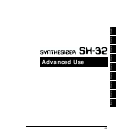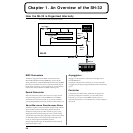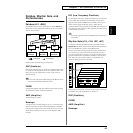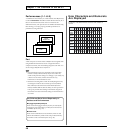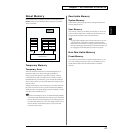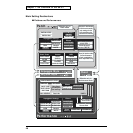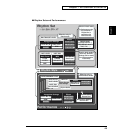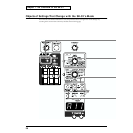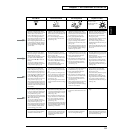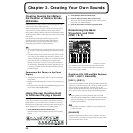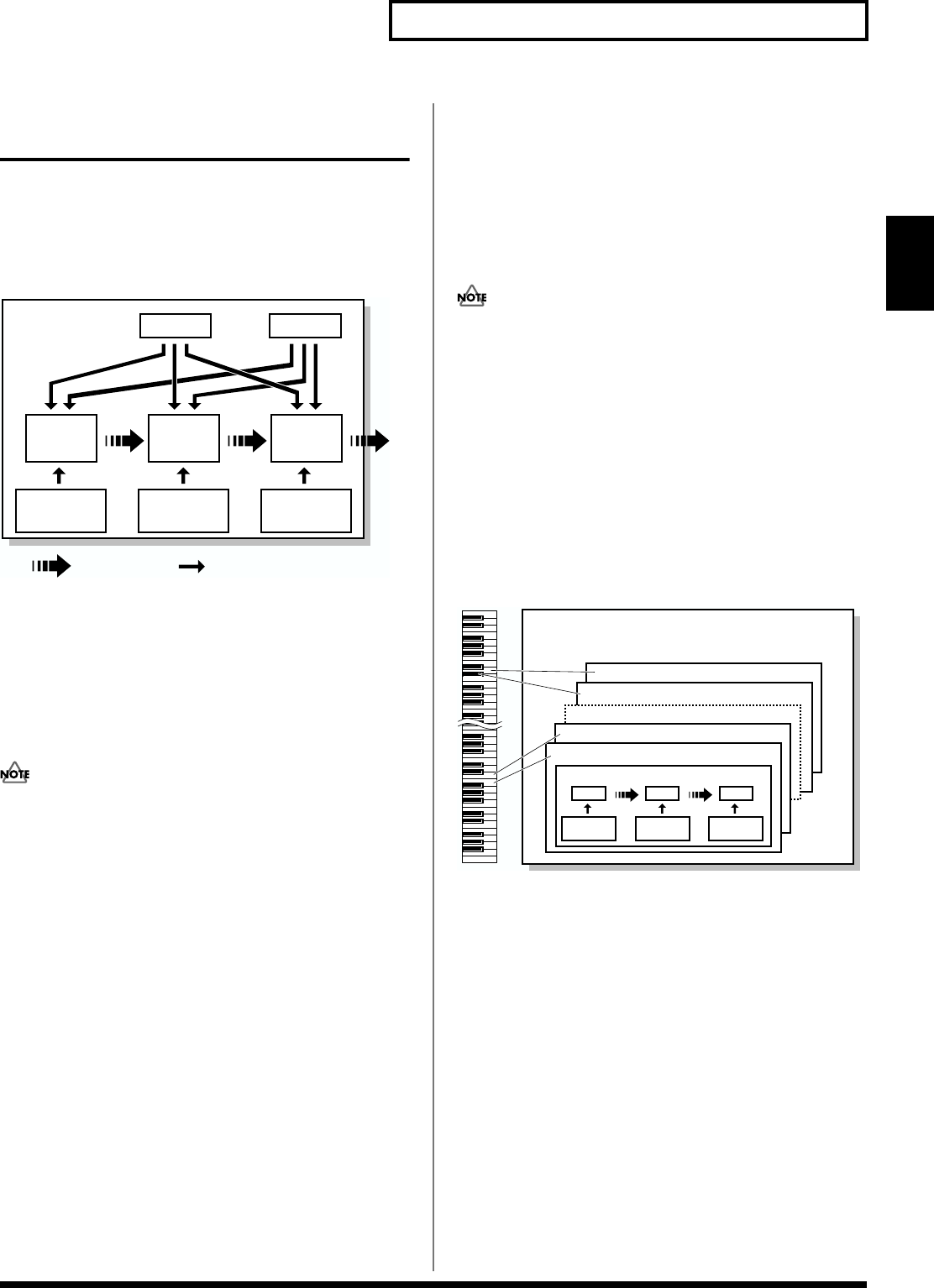
45
Chapter 1. An Overview of the SH-32
Chapter 1
Patches, Rhythm Sets, and
Performances
Patches (A11–D88)
An individual sound used in a performance is called a Patch. The
SH-32 offers a total of 256 Patches, divided into 128 “User Patches”
and 128 “Preset Patches.”
fig.01-02.e
Patches consist of the following five components.
OSC (Oscillator)
Provides for selection of the waveforms (waves) that form the basis
for sounds, and sets the pitch. There are two oscillators (OSC 1 and
OSC 2), and you can combine these to create a wide variety of
different sounds.
You can only make pitch-related settings for the Rhythm Tones
(percussion instruments) in the OSC section.
FILTER
Changes the brightness and other qualities of the sound, by setting
the characteristics of the constituent frequencies.
AMP (Amplifier)
Sets the changes in volume.
Envelope
You use Envelope to initiate changes to occur to a sound over time.
There are separate envelopes for Pitch, FILTER (filter), and AMP
(volume). For example if you wish to modify the way in which the
sound attacks or decays over time, you would adjust the AMP
envelope.
LFO (Low Frequency Oscillator)
Use the LFO to create cyclic changes (modulation) in a sound. There
are two LFOs (LFO 1 and LFO 2), and the effects of each one are
applied to OSC (pitch), FILTER (filter), and AMP (volume or pan).
When an LFO is applied to the OSC pitch, a vibrato effect is
produced. When an LFO is applied to the FILTER cutoff frequency, a
wah effect is produced. When an LFO is applied to the AMP volume,
a tremolo effect is produced.
You cannot apply LFO effects to the Rhythm Tones (percussion
instruments).
Rhythm Sets (r1U, r2U, r3P, r4P)
A collection of multiple percussion instrument sounds is called a
Rhythm Set. The SH-32 comes with four Rhythm Sets, divided into
two “User Rhythm Sets” and two “Preset Rhythm Sets.”
Since percussion instruments generally do not play melodies, there
is no need for a percussion instrument sound to be able to play a
scale on the keyboard. It is, however, more important that as many
percussion instruments as possible be available to you at the same
time. Therefore, each key (note number) of a Rhythm Set will
produce a different percussion instrument.
fig.01-03.e
Each percussion instrument consists of the following four elements.
(For details, refer to the explanations for “Patches.”)
OSC (Oscillator)
FILTER
AMP (Amplifier)
Envelope
OSC
PITCH
Envelope
FILTER
FILTER
Envelope
AMP
Envelope
AMP
LFO 1 LFO 2
control signal
Patch
audio signal
Note number 98 (D7)
Note number 97 (C#7)
Note number 36 (C2)
Note number 35 (B1)
Rhythm tone (Percussion instrument sound)
Rhythm Set
OSC
PITCH
Envelope
FILTER
FILTER
Envelope
AMP
Envelope
AMP



